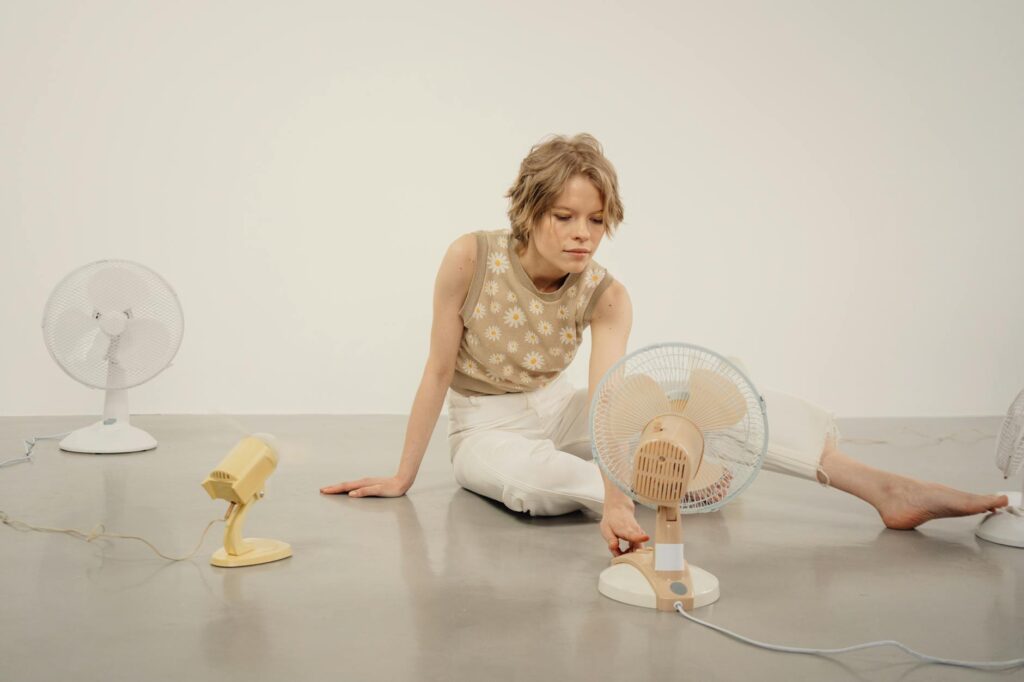Stepping into a cool, air-conditioned home on a sweltering summer day is pure bliss. But have you ever wondered about the science behind this modern marvel? It’s more than just cold air; it’s a fascinating process involving thermodynamics, refrigerants, and clever engineering. Let’s delve into the science of air conditioning and discover how your home gets cool.
Understanding Thermodynamics: The Basics
At the heart of air conditioning lies thermodynamics, the science of heat and energy transfer. Air conditioners work by moving heat from one place (your home) to another (the outdoors). This is achieved through a thermodynamic cycle, primarily using a refrigerant – a special fluid that absorbs and releases heat easily. 
The Refrigeration Cycle: A Step-by-Step Guide
The process begins with the refrigerant in a low-pressure, gaseous state. It absorbs heat from the air inside your home as it passes through the evaporator coils, cooling the air. Then, a compressor increases the refrigerant’s pressure and temperature, making it a hot, high-pressure gas. This hot gas then releases its heat to the outdoor air via the condenser coils. Finally, the refrigerant expands and cools down, restarting the cycle. Learn more about refrigerant types.
Evaporator Coils: Where the Magic Happens
The evaporator coils are crucial; they are the cold surfaces where the air in your home makes contact with the refrigerant. A fan blows air over these coils, absorbing the heat and lowering the temperature. The colder air is then circulated throughout your home via a system of ducts. 
Condenser Coils: Releasing the Heat
After the compressor raises the refrigerant’s temperature and pressure, the heat needs to be expelled. This occurs in the condenser coils, usually located outside your home. These coils release the absorbed heat into the outside air, often with the help of a fan. The efficiency of your condenser coils directly impacts your system’s overall performance. You should consider regular maintenance of these parts, as explained here.
The Role of Refrigerant: A Key Component
Refrigerants are vital to the process; they are specially engineered fluids that efficiently absorb and release heat. Over the years, the types of refrigerants used have evolved to minimize environmental impact. Understanding different refrigerants and their environmental impact is important. Modern refrigerants are designed to be more environmentally friendly. You can find more information about EPA regulations on refrigerants here.
Air Ducts: Distributing the Cool Air
Once the air is cooled, it needs to be distributed efficiently throughout your home. This is the job of the air ducts – a network of tubes and vents that carry cool air to different rooms. Properly designed and maintained ducts are essential for even cooling and efficient energy use. Consider having your ducts inspected regularly. Proper duct maintenance can significantly increase your system’s efficiency.
Thermostats: Controlling the System
The thermostat acts as the brains of your air conditioning system. It monitors the temperature in your home and turns the system on or off as needed to maintain your desired temperature setting. Modern thermostats offer advanced features like programmable settings and remote control, allowing for greater energy efficiency and convenience. 
Energy Efficiency: Choosing the Right System
The energy efficiency of your air conditioning system is a key consideration. Look for systems with high SEER (Seasonal Energy Efficiency Ratio) ratings, indicating how much cooling you get per unit of energy consumed. Choosing an appropriately sized system for your home is also crucial for optimal efficiency and performance. Learn about energy star rated systems here.
Understanding the science behind air conditioning allows us to appreciate the engineering marvel that keeps us cool and comfortable. From thermodynamics to refrigerants and energy efficiency, there are many factors to consider when it comes to the science of home cooling. By understanding these principles, you can make informed decisions about maintaining and improving your home’s cooling system.
Frequently Asked Questions
What is a refrigerant? A refrigerant is a special fluid that absorbs and releases heat, crucial for the air conditioning process.
How do I improve the efficiency of my AC? Regular maintenance, proper duct sealing, and choosing an appropriately sized system can improve efficiency.
How often should I change my air filter? You should change your air filter every 1-3 months, depending on usage and type of filter.
What is SEER rating? The SEER (Seasonal Energy Efficiency Ratio) rating indicates the cooling capacity per unit of energy consumed.
Can I install an AC unit myself? While possible for some simpler units, professional installation is often recommended for optimal performance and safety.





